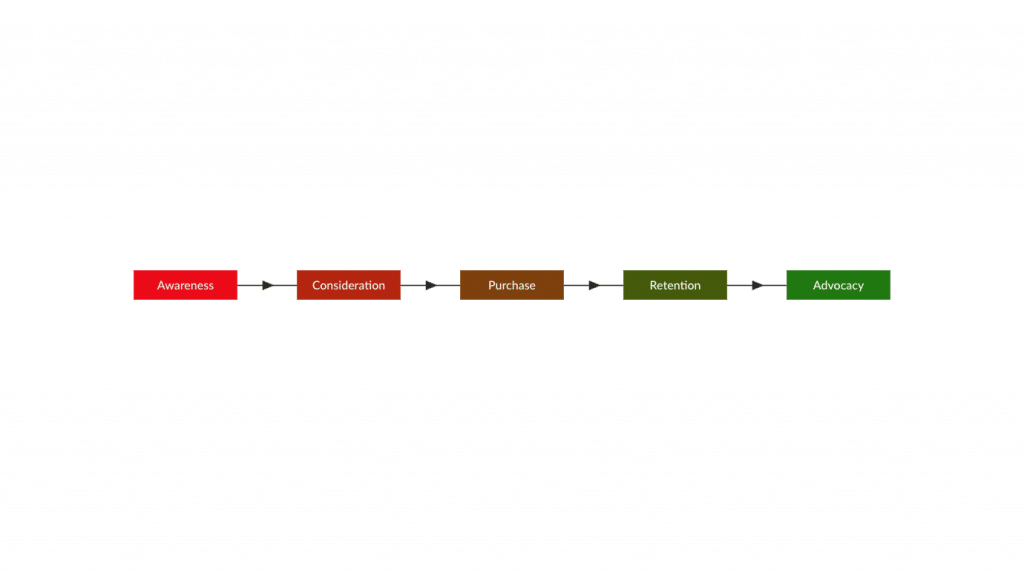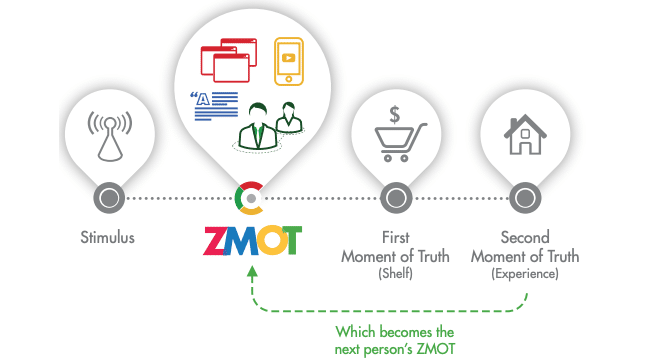What is a customer journey?
The customer journey describes the customer’s journey through different phases before and after the purchase of a product.
Along their journey, they come into contact with various direct and indirect touchpoints with the company.
Depending on the experience they have at these touchpoints, this determines the further course of their journey.
The task of a company is to make the best possible use of these touchpoints at the various stages for a positive experience.
This is the task of customer experience management.
What is the goal of a customer journey?
In order to analyze the customer buying process, it is necessary to understand what a customer’s journey looks like, from the first contact to the purchase, through which phases he moves and with which contact points he comes into contact with the company within the phases.
To get a good overview and understanding of the customer journey, there is something called customer journey mapping.
A customer journey map is a visual representation of every direct and indirect interaction the customer has with your company from first contact to purchase and after-sales with you, your product or service.
The goal is to provide prospects and customers with a positive and exceptional experience, which at best leads to long-term success through profitability and sales.
To do this, for example, you need to find occasions and reasons why customers abandon the buying process or place the right impulses in the appropriate places so that prospects can be guided further through the buying process.

Why is the customer journey important?
If you want to accompany your customer from the initial prospect to a loyal customer, you should see yourself as a guide and deal with the customer journey in detail.
Because in every phase, from initial contact to after-sales, a company must help the customer to go through his journey without obstacles and negative experiences.
To do this, companies must first understand what the customer’s customer journey looks like and which interaction points they come into contact with within the journey.
With this information, companies can use targeted marketing to place important information and buying impulses in the right places and optimize these interaction points in terms of expectations and desires for high customer satisfaction.
In doing so, the analysis of the customer journey does not always have to have the goal of a purchase taking place.
Signing up for a newsletter or filling out a form for a consultation can also be goals for optimizing a company’s customer journey.
How many phases does a customer journey have?
There are various models for this, which have developed over the years.
Let’s start with the AIDA model from 1898 by Elmo Lewis.
The AIDA model is a stage model that divides advertising effectiveness from problem/need identification to purchase into the following four stages:
- Attention
- Interest
- Desire/desire
- Action

Although the model has been around for many, many years, it is still very often used today in advertising strategies, promotional activities and sales pitches.
But the mixing of offline and online channels, as well as the behavior in the post-purchase phase, which is not taken into account in the stage model, makes it necessary to supplement the original model for describing the customer journey with additional phases.
This extension resulted in the ACCRA model, which is an acronym for the points:
- Attention
- Interest
- Purchase/action
- Binding
- Brand ambassador
stands for and more accurately describes the customer’s journey today.

In addition to the AIDA model and the ACCRA model, there is the “Zero Moment of Truth” model developed by Google.
As a result of increasing digitization, it describes the moments when a stimulus is triggered in a customer and they digitally learn about topics or products, read reviews, and inquire about alternatives before making a purchase decision.
After the purchase, the customer collects experiences and shares them with others.

There are other models such as the Customer Purchase Journey, the Consumer Decision Journey or the Messy Middle, which describe the customer journey in their own way.
What makes a good customer journey?
That’s a good question, and I have the right answer for you:
A Customer Journey is good above all when it meets the expectations and wishes of the customer at every stage of their journey.
Its goal is to create a positive experience and a satisfied mood for the traveler.
Sure, it’s not easy to satisfy every individual 100% on their journey and cater to their wants and needs, but the customer journey is not about the individual traveler, it’s about the entire customer.
For example, if one in three experiences a positive experience with your company, it means that you are providing a good Customer Journey for your customers, but also that there is further potential upside.
However, there are also aspects that many customers value. If you meet these, you’ve already satisfied a larger set of customers.
This includes a clear purchasing process, which should be simple and easy to complete – whether in the local store or in the online store.
On site, customers usually attach more importance to personal advice. When shopping online, this is more difficult to implement, but is also less expected.
Offering chatbots can eliminate potential difficulties here. But clear navigation also contributes to a good customer journey.
Since every company is individual, so is every Customer Journey.
You should know your customers best and know what they value.
In the following I have collected a few general points for you, which have a positive impact on the Customer Journey:
- Provide detailed information on-point for the traveler.
- Regularly solicit feedback to optimize the customer journey.
- Reduce interaction points that do not add value.
- Train employees in customer experience.
As a general rule, customers want to feel valued and met. The best way to achieve this is to ask them what they want. Customer surveys at the individual touchpoints are the method of choice here.

Conclusion: The Customer Journey – a central component of the customer experience
Now you’ve learned a few things about the Customer Journey.
It’s important to note that the customer journey is a key part of the customer experience and can help your company succeed in the marketplace in the long run.
Remember, if you have a negative customer journey, the prospect will definitely not become a (loyal) customer. This not only hurts your image, but also your sales.
Therefore, you should put your energy where it really brings you something: in the optimization of your customer journey.
Of course, every company is unique. Therefore, it’s difficult to give universal advice. What works well for one company doesn’t necessarily work for another.
Therefore, always take into account: You know your customers best and know what is important and valuable to them. To get even more clarity, short surveys of your customers at the individual touchpoints will help you. These will certainly give you an even clearer picture and you will see where you can still improve your customer journey.
Approach it slowly, try it out. If something doesn’t work the way you want it to, adjust it.
You can’t do much wrong if you try.
On the other hand, it would be a mistake not to try and leave everything as it is.
We wish you good luck with the implementation.
More about Customer Journey
- 8 methods for analyzing the customer journey
- 5 steps to building an effective customer journey funnel
- Customer journey management: What it is and why you need it
- The 5 phases of a Customer Journey
- Customer Journey Map: The visualization of the customer journey
- 7 steps to a B2B customer journey strategy






